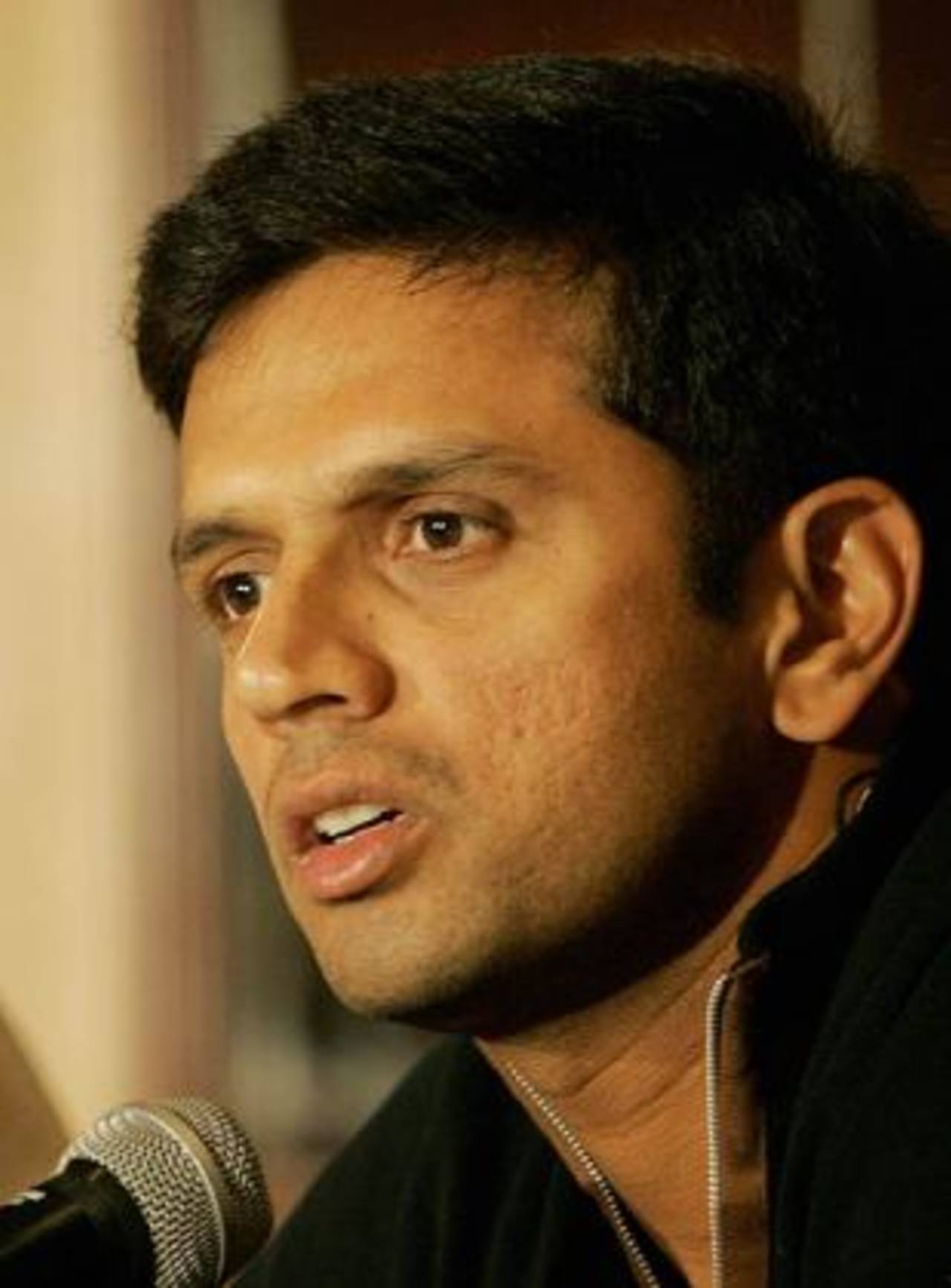Rahul Dravid has made a spirited call for nurturing first-class and Test cricket, saying the longer and more traditional formats provide players with the grounding needed to prosper in the newer, shorter versions. The steps Dravid suggested for bolstering Tests included a more serious consideration of day-night Tests, increasing pay for long-form specialists, a streamlined and regularised cricket calendar, and providing more context to matches through competitions like the Test championship.
Perhaps the most radical idea Dravid proposed was for the less successful countries to find a way to involve some of their teams in the first-class structures of more robust cricketing nations, such as a Bangladesh side participating in the Indian domestic season.
Dravid was speaking at the ESPNcricinfo for Cricket event held in London on Monday, part of a series of events held to celebrate the website's 20th anniversary.
While highlighting the primacy of Tests, he acknowledged the benefits provided by Twenty20s, not just financially but with the innovations in cricket it has spurred. Dravid urged people to think beyond pat metaphors like "fast food v fine dining" when comparing the two formats, and, putting forth a more nuanced explanation of the difference between them, said he believed they could exist alongside each other.
"Test cricket, an older, larger entity is the trunk of a tree and the shorter game - be it T20 or ODIs - is its branches, its offshoots," he said. "Now to be fair, it is the branches that carry the fruit, earn the benefits of the larger garden in which they stand and so catch the eye. The trunk, though, is the old, massive, larger thing which took a very long time to reach height and bulk. But it is actually a life source: chip away at the trunk or cut it down and the branches will fall off, the fruit will dry up."
Dravid elaborated that the sustained examination cricketers faced in the longer version helped them, especially youngsters, better understand their basic game. "The fundamental core of every cricketer's game is enriched by playing four- and five-day cricket," he said. "By using those well-trained powers of adaptability, discipline, resilience and focus as a T20 cricketer, you will have double the advantage than the player possessed only of talent and timing.
"The skill of learning how to think clearly under pressure is required in T20, but it is built through having to endure pressure for a session, two sessions, an entire day, a series of spells."
Most of the biggest stars today honed their game over years of first-class cricket, but with the ever-increasing focus on T20, Dravid sounded a note of caution for the future. "We are, I believe, maybe one generation away from reaching the point where our entire youth structures could cater only to T20 without any emphasis on the longer form of the game. By not giving young players a chance to explore their versatility, endurance or even improvisational skills, we will be selling ourselves and our sport well short."
"We are, I believe, maybe one generation away from reaching the point where our entire youth structures could cater only to T20 without any emphasis on the longer form of the game. By not giving young players a chance to explore their versatility, endurance or even improvisational skills, we will be selling ourselves and our sport well short."
He then elaborated on measures to prop up the long form. "If that means reworking how first-class and Test players can be out on more lucrative contracts, let's get the accountants on this," he said. "If it means playing day-night cricket, we must give it a try, keep an open mind. The game's traditions aren't under threat if we play Test cricket under lights. I know there have been concerns about the durability of the pink ball, but I have had some experience of it having played for the MCC, and it seemed to hold up okay."
A regularised itinerary was another of Dravid's ideas. "We can start by sorting out the scheduling around Test cricket, to ensure that teams can complete their home-and-away cycles against each other over a four-year period. This will mean balancing and creating context for all the three formats." He argued that the Ashes didn't lose its lustre over the years partly because of its fixed place in the calendar, allowing a sense of anticipation to build up.
"If we can answer that question - what's this for? - with something other than the words 'television rights' we will have done well." One way to address the lack of context, he felt, was to have marquee tournaments like the Test championship and the Champions Trophy.
The most important step was to shore up first-class structures, especially in the smaller cricketing countries. "Bangladesh is a good example of a country with a great passion for the game and they don't lack in talent. But they are still struggling to find their feet, literally and figuratively, in Test cricket because of the lack of a strong first-class structure," he said. "Test cricket is not the place to start trying to learn new skills."
He argued that more established nations should help out the less-resourced countries, by integrating overseas teams in their domestic competitions, suggesting pairs of "India for Bangladesh, South Africa for Zimbabwe, England for West Indies, Australia for New Zealand." The way ahead was to put aside short-term profit and work collaboratively, he contended, since "we are a very small community and we can't afford to lose the members of our family".
Click here to read the full text of the speech 